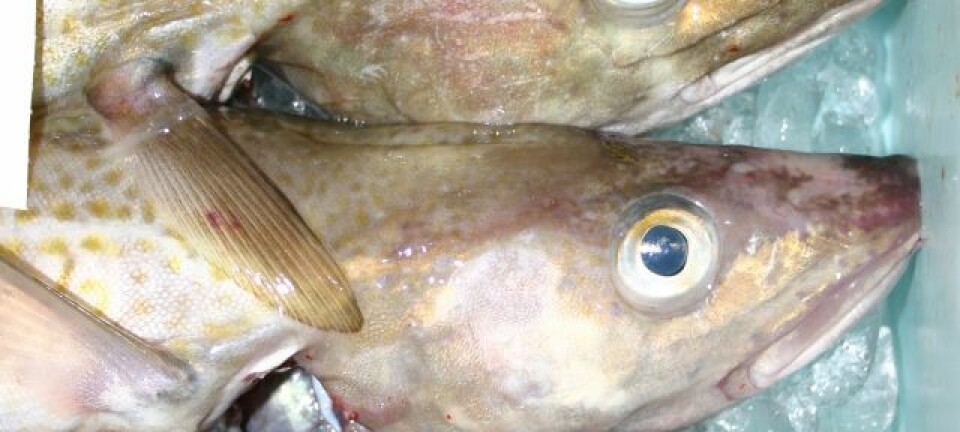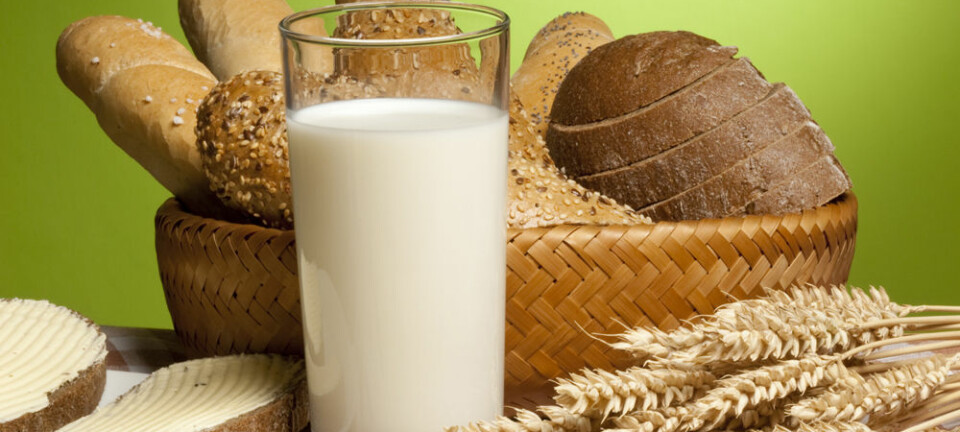This article was produced and financed by Norwegian Institute for Agricultural and Environmental Research
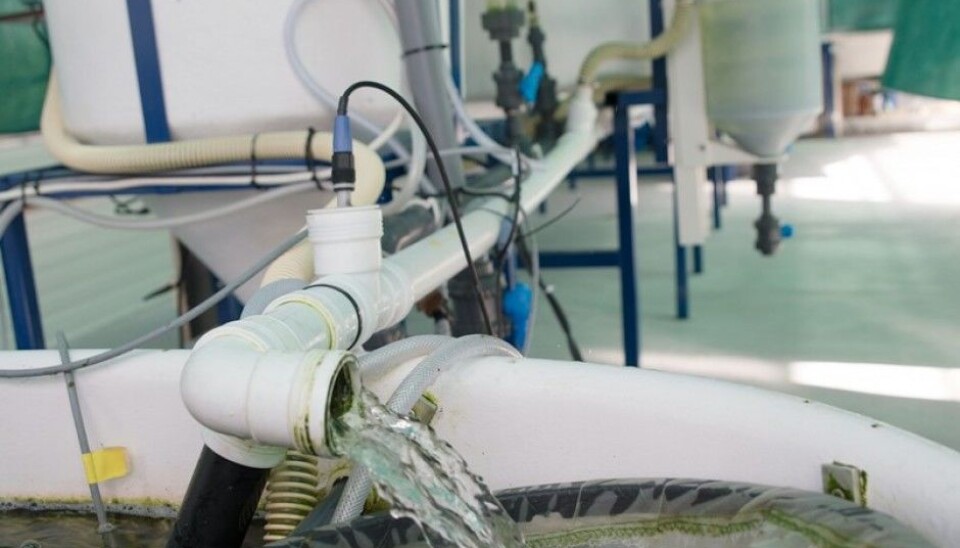
Aquaponics – fish and crop production in the same pool
In practice, it's a mini-ecosystem with zero emissions.
Denne artikkelen er over ti år gammel og kan inneholde utdatert informasjon.
In an aquaponics system, feed remnants and excrement from the fish are composted, which provides the plants with nitrogen, phosphorus and other essential nutrients. The plants also absorb nutrients that the fish do not tolerate in large amounts. As a result, the water can be reused for aquaculture.
In other words: The site itself recycles the water.
At Bioforsk (The Norwegian Institute for Agricultural and Environmental Research) at Landvik in Grimstad, a test site has been in operation since March 2014.
Learning from yellow lettuce
In the greenhouse in Grimstad, two test fields with plants sit next to each other. One of the fields has been fertilised in the usual manner with fertiliser, while the other is part of an aquaponics system, where the plants get nutrients from fish.
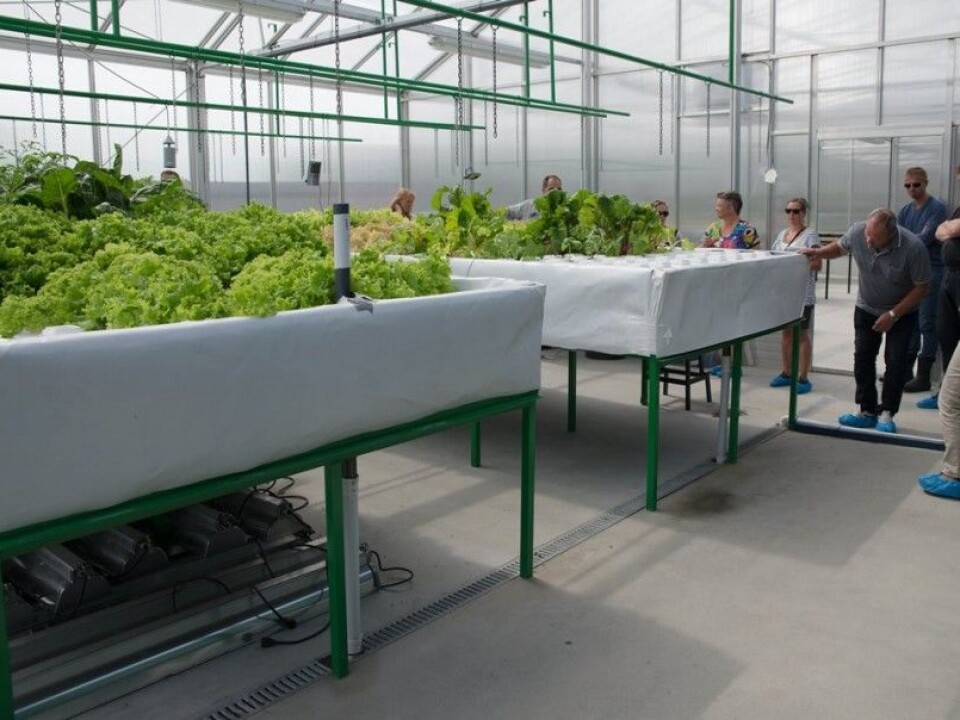
Here, the plants float on the water on a styrofoam board. The fertilised field is green and lush, while the aquaponics field varies from yellow to green. The number of plants that can be cultivated depends on how much feed the fish receive, as well as the number of fish and the size of the fish.
Usually, between 60 and 110 grams of feed per square meter with crop is required.
At the site in Landvik, the scientists use a total of 200 grams of fish feed. In theory this means that they have room for between two and four square meters of plants. However, this time the researchers have filled up almost ten square meters with different crops. Therefore, it is no surprise that they are experiencing nutrient deficiency.
“We chose to use a lot of plants in order to learn,” says researcher Randi Seljåsen.

She says it is interesting to observe how some plants manage better than others. The brightest plants experience the greatest nutrient deficiency.
“Here we see that some manage better with small amounts of nutrients,” says Seljåsen while holding up a plant with a large root system.
“This one has understood the importance of pushing on with roots to get hold of the nutrition.”
Poop is good
If the system is in balance, the plant part will provide about 60 percent of the economic gain. The thought is that the fish in the aquaponics system will also be sold.
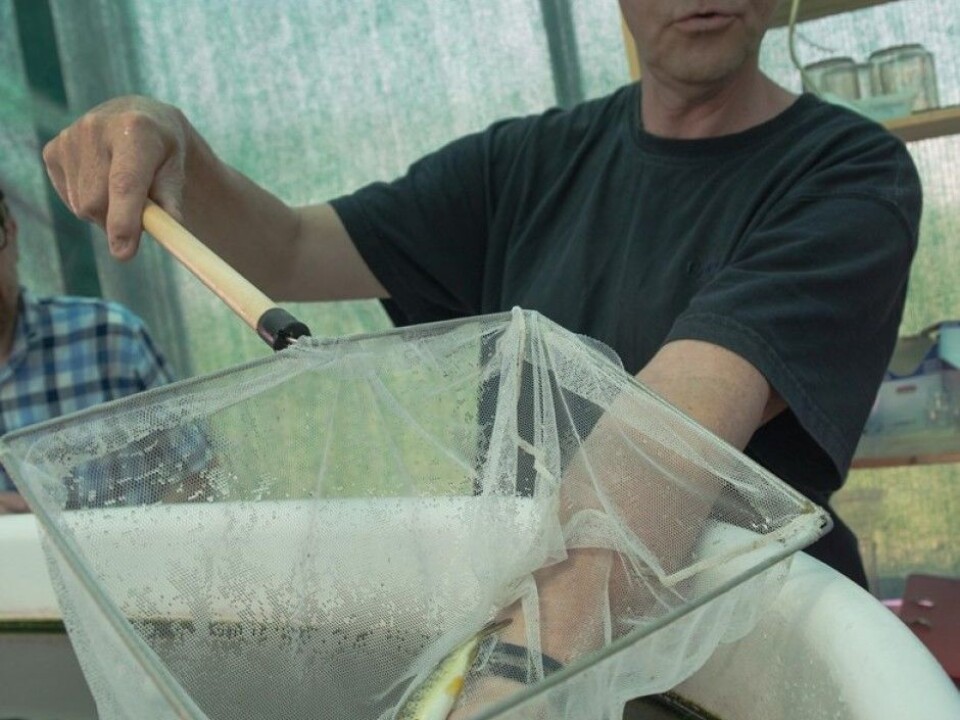
“Therefore, we have ended up with local brown trout from Otra, as the market for this type of fish is still good,” says project manager and researcher Siv Lene Gangenes Skar from Bioforsk.
It is the first time brown trout is introduced in an aquaponics system, and researchers are therefore excited to see how the fish will thrive. Whether the brown trout will be used after the trial period depends on how well the fish grow.
Water quality important for growth
The water is so murky that it is not possible to see the fish through the small windows in the tanks. Homme uses a landing net to fish up a couple of brown trout.
“The plants shouldn’t be completely clinically clean because there needs to be ecological balance with bacteria, but the ‘garden’ must be tidy for the fish to grow,” he says.
The Norwegian Institute for Water Research (NIVA) is a project partner and helps to keep a tidy "garden." The scientists monitor the water quality continuously and send manual samples to the laboratory for testing.
The site in Grimstad is currently one of few totally enclosed aquaponics farms, where all the water is recycled. It is only refilled by a few percent, due to evaporation and absorption by the plants.
“So far, things are good. The fish thrive. What we are excited to find out is how long we can recycle all the water without replacing any of it,” says NIVA researcher Helge Liltved, who is also a professor at the University of Agder.
“We currently know little about what may be problematic over longer periods.
Nordic project
In practise, an aquaponics system could be set up anywhere, but different countries have various needs and possibilities. Siv Lene Gangenes Skar is project manager for a Nordic project, Aquaponics Noma, with partners from Iceland and Denmark.
“We have slightly different focus, but the environmental profile is found in all the countries. In Denmark they are working on building up a system in a cafe on the roof of a building, so that guests can sit in the middle of the production hall”.
In Iceland there are good conditions for aquaculture, and there are several flow through sites which do not recycle any water. They want to produce fish in a sustainable way by recycling some of the waste water, for example 70 percent. In Norway, however, scientists are working with completely closed systems, and one hundred percent recycling on land.
Water for Sahara?
Closed farms that recycle water, provide new opportunities for sustainable food production in dry areas.
“It has actually been discussed to build a site in the Sahara, and it is entirely possible. Or in marshlands where it is difficult to cultivate. Israel, which is struggling with the lack of clean water is also very interested,” says Gangenes Skar.
Translated by: Siri Elise Dybdal







